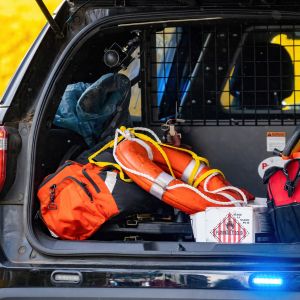To stay prepared for roadside emergencies, pack an emergency kit for car breakdowns with essential tools, first-aid supplies, and safety gear to ensure a quick and safe response.
A car breakdown can happen anytime, anywhere, and without warning. Whether you’re on a long road trip or just commuting to work, having a well-prepared emergency kit for car breakdowns can make a huge difference in ensuring your safety and convenience. Many drivers overlook the importance of an emergency kit, only realising its necessity when they are stuck on the side of the road.
With the right tools and supplies, you can handle minor car issues yourself or stay safe while waiting for professional help like Crossroads Helpline. In this guide, we’ll cover everything you need to know about how to pack an emergency kit for car breakdowns efficiently, ensuring you’re ready for any situation.

Why You Need an Emergency Kit for Car Breakdowns
No one expects their car to break down, but mechanical failures, flat tires, or battery issues can happen anytime. An emergency kit for car breakdowns provides peace of mind and ensures you’re prepared for any roadside emergency. Here’s why you should always keep one in your car:
- Safety: Protect yourself and passengers while waiting for assistance.
- Quick Fixes: Some issues like a flat tire or dead battery can be fixed with basic tools. For more serious cases, it’s best to call a professional flat tire repair service near you to avoid damaging your wheel or rim.
- Weather Protection: blankets and rain gear help during extreme weather conditions.
- Medical Emergencies: A first-aid kit can be lifesaving in case of minor injuries.
- Communication & Visibility: Reflective gear, flashlights, and warning triangles ensure visibility on the road.
Essential Items for Your Car Emergency Kit
Your car emergency kit should include items that address a variety of potential breakdown scenarios. Here’s a detailed breakdown of what you should pack:
1. Basic Repair Tools
These items help you handle minor repairs and maintenance:
- Jumper cables (at least 12 feet long). If you’re unsure how to use jumper cables, it’s safer to rely on professionals who can jumpstart your car battery safely.
- Tire repair kit or spare tire
- Lug wrench and jack
- Multi-tool or basic tool kit
- Duct tape and zip ties (temporary fixes for leaks or broken parts)
- Tow rope (for towing assistance)
While a tow rope is useful, sometimes you’ll need professional emergency car towing assistance to safely move your vehicle.
2. Safety & Visibility Gear
When stranded on the road, staying visible is crucial.
- Reflective triangles and roadside flares
- LED flashlight with extra batteries
- High-visibility safety vest
- Whistle (to signal for help)
3. First Aid & Medical Supplies
In case of an accident, a well-stocked first-aid kit is essential.
- Bandages, antiseptic wipes, and gauze pads
- Pain relievers and fever reducers
- Emergency contact numbers
- Medical gloves and tweezers
4. Emergency Food & Water
If stranded for an extended period, food and water are lifesaving.
- Bottled water (at least 3 liters per person)
- Non-perishable snacks (energy bars, nuts, canned food)
- Can opener (if carrying canned food)
5. Seasonal & Weather Protection Items
Depending on where you drive, weather conditions can be unpredictable.
- Blankets and extra-warm clothing (for winter travel)
- Rain poncho or umbrella
- Ice scraper and snow shovel
- Sunscreen and hat (for summer travel)
6. Communication & Navigation Tools
If your phone battery dies or you lose reception, these items can be helpful:
- Fully charged power bank
- Portable phone charger
- Paper map (in case GPS fails)
7. Miscellaneous Items
Other useful things to include:
- Cash and coins (for tolls or emergency fuel)
- Notebook and pen (to record details in case of an accident)
- Spare car keys
In case you run out of fuel, having access to an on-demand fuel delivery service can save you time and stress.
Packing and Organizing Your Emergency Kit
A cluttered emergency kit can be frustrating when you need something quickly. Here’s how to keep it organised:
Best Ways to Pack Your Car Emergency Kit
| Item Category | Recommended Storage Location |
|---|---|
| Basic Tools | In the trunk toolbox |
| Safety Gear | Easily accessible side pockets |
| First Aid Kit | Glove compartment |
| Food & Water | Under passenger seat |
| Seasonal Items | Backseat or storage bin |
| Communication Tools | Glove compartment |
- Store tools in a sturdy, waterproof bag.
- Use labelled pouches for first aid, food, and documents.
- Regularly check and replace expired items (batteries, food, water).
And if you’ve lost or forgotten your keys inside, don’t panic—locked out of your car? Help is just a call away.
Tips to Maintain Your Emergency Kit
Packing an emergency kit for car breakdowns is only half the job; maintaining it is just as important.
- Check your kit every six months to replace used or expired items.
- Update your first-aid kit with fresh medical supplies.
- Rotate food and water supplies to prevent spoilage.
- Ensure your flashlight and power bank are fully charged.
Conclusion
A well-packed emergency kit for car breakdowns can be a lifesaver when you find yourself in unexpected roadside situations. Whether you’re dealing with a dead battery, a flat tire, or extreme weather conditions, being prepared ensures you stay safe while waiting for professional help like Crossroads Helpline.
By keeping your emergency kit organised, regularly updating it, and ensuring all essentials are included, you’ll never have to worry about unexpected breakdowns again. Make sure to pack your emergency kit today and drive with confidence, knowing you’re ready for any situation on the road!

